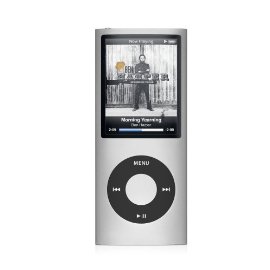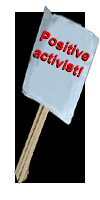I downloaded Google Maps Mobile over the hotel Wi-Fi to my laptop and transferred it to my phone. What a brilliant application. It works off cell phone mast triangulation (accuracy varies depends on the masts in the area) or it can use your phone's GPS.

I have an HTC Touch Diamond which I bought some time back due to its full suite of technologies (wi-fi, GPS, FM radio, Bluetooth 2.0, 3.2 megapixel camera, HSDPA, 3G, EDGE, GPRS) and its size. It has an iPhone-like touch interface, but following the iPhone shortly after its launch, it had a fuller complement of technologies and was about half the size. It integrates well with email, supporting multiple IMAP and POP3 accounts. It's been a great phone with only one shortcoming - the feature set overwhelms its battery which often hardly lasts a day. The GPS has to be used in a car connected to power, or it drains the battery in about 20 minutes.

I also downloaded Skype for Mobile to make calls back to SA at a cheaper rate while away.

I thought I had the North American maps for Co-Pilot, my Navteq-based GPS software. When I reached the US, I found I did not. I paid for the US and South African maps and then assumed I had access. But I then discovered they needed to be downloaded. As an HTC user, the maps are difficult to get hold of as CoPilot is bundled with the phone. They must be purchased and you then have to email support to get the link to download. Other users purchase the Co-Pilot software and then use its desktop console to download the maps. The North American maps were 1GB. By the time I reached Los Vegas and was about to hire a car, I discovered I did not have the maps. In discovering this I used 12mb of data on roaming while sitting at the side of the road - this alone cost me R1400. I eventually made it to my destination in Los Angeles using Google Maps. This is really not ideal as you have to read off the screen - difficult while driving and navigating the myriad of freeways in LA. CoPilot GPS has voice prompting.

After making contact with Co-Pilot European support from my hotel, I downloaded 250Mb before I had to check out. I downloaded the remainder when I reached my cousins. I was now in position to use the GPS maps and verbal direction on my drive up the west coast.
I had forgotten my iPod in South Africa and bought the new Nano in New York to listen to Depeche Mode and U2 prior to their concerts. At $199 for the 16Gb Nano, it was an expensive mistake. Now I have two...

I went to the New York store RCS Experience to buy a long-life battery for my Lenovo T60 notebook. My previous battery had reached the end of its useful life, and I have always wanted something for long plane journey's etc. It was a crazily expensive purchase in South Africa, and slightly cheaper in New York ($166).
While there I found a point-and-shoot camera, to complement my Canon EOS D20. It is the truly amazing Canon Digital IXUS 960IS - it takes 12 Megapixel photos and shoots HD video. It was quite an expensive purchase (about $300) with another $65 for an 8Gb extreme speed SD card.

A productivity aid I've longed for is a bluetooth keyboard for my phone. I bought a Freedom universal fold-up keyboard. It is amazing. It provides an almost full size keyboard and with office mobile on my phone, this allows me to work comfortably in a coffee shop on my phone. That cost about $80 and was one of my best purchases.


The truly impulse purchase was a set of binoculars. I've never had a pair, and end up using the telephoto lens on my camera in the bush. I found a cheapish pair of Bushnell binocs with an SD slot that allows you to take a 3.2 Megapixel photo of whatever you're viewing through the lens. They cost $240 - a long way short of the $3000-odd dollar starting price for Leica and other pedigrees.

I put the camera to good use and took some nice pictures and videos at the Depeche Mode and U2 Concerts, and while playing golf. I don't really do typical tourist pictures - you can always download really good ones off the net. I resolved during this trip that that was a poor excuse. In future I will look to take a good photo and help preserve a memory.
I began this resolution in LA at Universal pictures - where I was dismayed my Canon EOS D20 stopped working. It gave a Compact Flash error, yet the CF disk worked on a flash reader. That was really irritating, especially after hauling the camera half way round the world. When I got back I reformatted the disk and it's now working again.
I attempted to get a US pre-paid contract while in the US to reduce my burgeoning cell phone bill. I found that the US pre-paid contracts have no data portion. How irritating. That cost me a lot of money as I continued to access Google maps, etc while roaming.
Once back in the UK, I switched to a new Vodafone pre-paid account. I had a nightmare setting the account up, which I will detail in a comprehensive bitch about Vodafone service in another post. But once on that I was able to sustain a week's comprehensive data access and calls for less than £15.

No comments:
Post a Comment